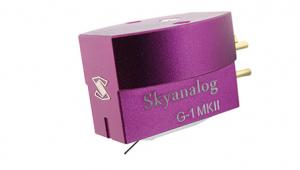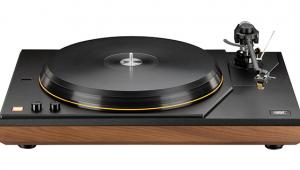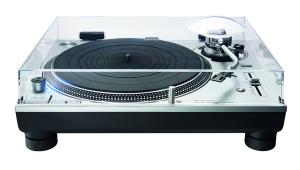Transfiguration Phoenix (£1350)
Naming a cartridge after a firebird that rises from its own ashes may be a portentous omen, given Transfiguration’s previous success in crafting high-class pickups. So maybe the incendiary title is supposed to serve more as a pointer to a fiery performance?
After the revamp of the brand’s lineup, this model doesn’t have a natural predecessor, by price at least, since it’s pitched below the former top Temper model, and above the similarly obsolete Spirit. But at £1350 it sits neatly between the award-winning Orpheus (£2750) [March ’07] and the new entry-level Axia at £890, and closely resembles the Spirit in body shape.
Like former Transfigurations, it uses an unusual ‘yokeless’ generator inside with ring magnets surrounding the sets of coils. Unlike the Orpheus which has a single ring magnet with the coils intimately located inside, the Phoenix and Axia models use two magnets, placed before and after the coils. When first introduced last year, the Phoenix used two differing magnets, samarium and neodymium, but the current version tested here now uses neodymium at both ends.
The cartridge body is a solid-feeling aluminium chunk, anodised with a smart satin black finish. Stylus profile is listed as Ogura PA measuring 3 x 30μm and the cantilever – conspicuously shorter than on some MC cartridges – is 0.3mm boron. Overall weight is a low-ish 7.8g and optimum tracking force is 2g, which is how the Phoenix was set up for listening.
SONGBIRD
First impressions of the Phoenix – persisting after the cartridge was afforded some run-in time – was of a lively and colourful performer. Coming after time spent with the uncannily neutral Ortofon Windfeld and the level-headed Linn Akiva, the Phoenix was full of fun and drama, a little dynamo of sound that was entirely at home mounted in a Linn LV II tonearm on a LP12 with full Funk Vector upgrade.
Here was a cartridge for the heart rather than the head, for while it proved it had an excellent way with detail retrieval from any record, it soon drew me straight into the musical performance itself, pushing aside such considerations as attack, decay, stereo imaging and frequency extension.
Where it missed out compared to the Orpheus – at twice the price remember – was in mild congestion when the mix gets busy, a dilution in purity of high soprano voices and a slightly less even bass quality.
Steve Howe’s solo turn on The Yes Album left me enthralled with the sound of fast strums and lightning fretboard runs, letting me overlook a reduced low bass reach and the sense of limitless upper span available from the flagship Orpheus. Further into the album, I realised the Phoenix couldn’t tell me everything about the technical aspects of the performance and production; yet the trade for undeniable musical involvement made the loss almost incidental.
Just when I was beginning to think this was a cartridge for those that solely prize the foot-tap factor, a spell with orchestral and choral works showed the Phoenix can rise above more than just rock and jazz. First pianist Van Cliburn’s fingers rippling up the keyboard through Rachmaninov’s Piano Concerto No 3 [RCA VICS-1032], and then the delicate restraint of Allegri’s Misere [EMI CFP 40339] showed an irrepressible knack for tangible, life-like 3D sound from a record.
At its best unstoppably groovy, intricate and lyrical, the Phoenix is a worthy addition to Transfiguration’s range of compelling cartridges. With its silky and expressive manner, getting to the heart of the music just comes easily to this songbird.
This review was originally published in the March 2008 Issue



















































